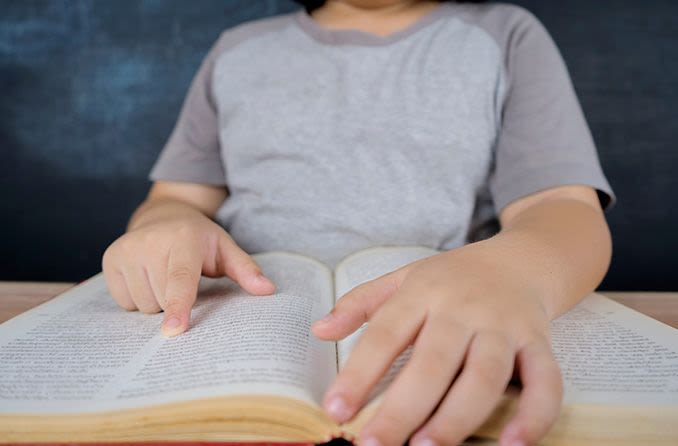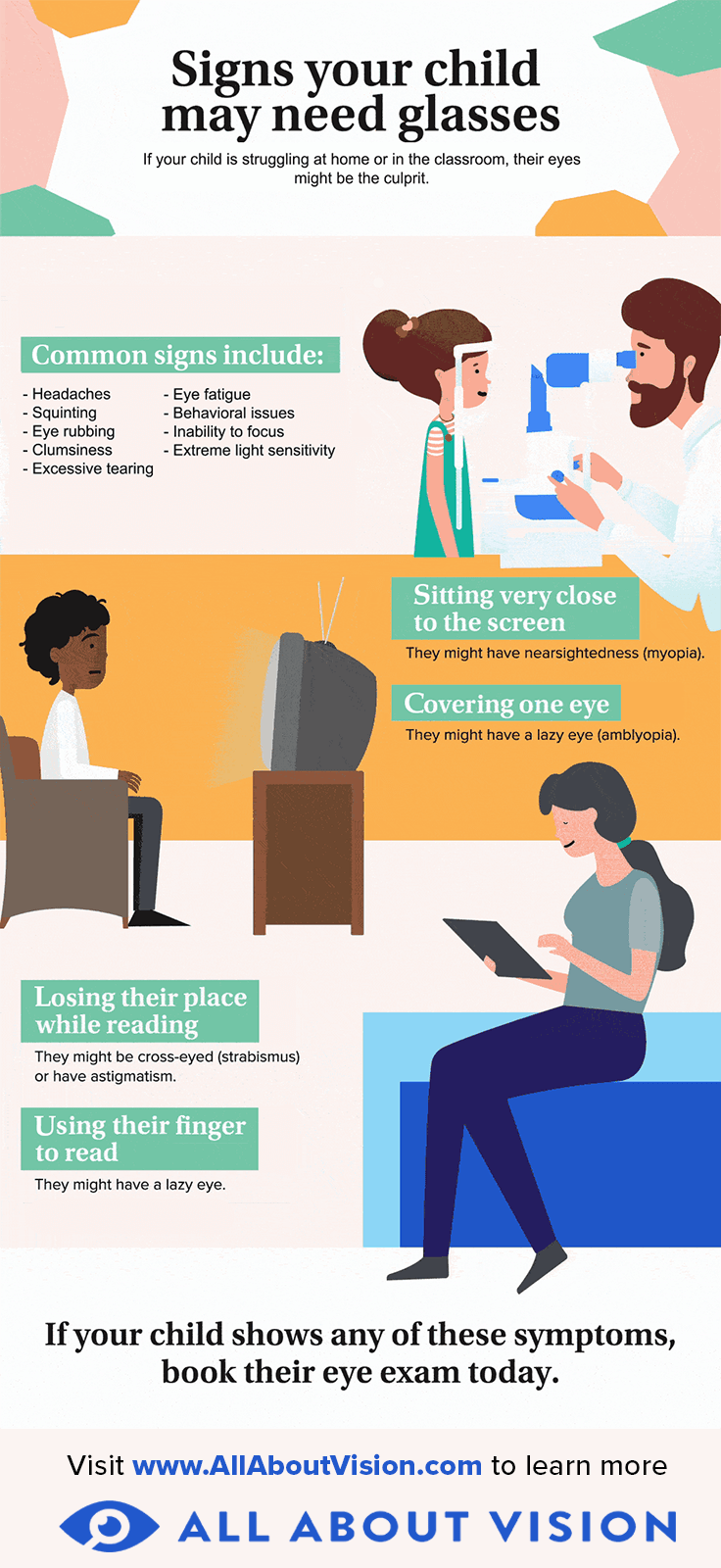How do I know if my child needs glasses?

Undiagnosed and untreated vision problems can have a major impact on a child’s life, causing their academic performance to suffer and their overall quality of life to decline. Depending on the vision issues your child is facing, eyeglasses can help.
Does my child really need glasses?
If you have any reason to think your child might need glasses, schedule an eye exam with a pediatric vision specialist near you.
Even when all is well, the American Optometric Association recommends that children have their eyes examined between six months and one year, between three and five years, again before first grade and annually thereafter.
Children don’t always know how to verbalize when their vision feels off, but they might be able to show you (or tell you) something is amiss in other ways.
SEE RELATED: What is a pediatric optometrist?
Signs that your young child may need glasses include:
Headaches and/or nausea
Squinting
Excessive tearing
Eye rubbing
Clumsiness
Behavioral issues/inability to focus
Extreme light sensitivity
Eye fatigue
When children reach school age, indicators of possible vision problems grow along with all the new skills and activities they begin to learn and practice.
Here are signs of vision problems to watch for in school-age children:
1. Sitting very close to the screen
If your child is nearsighted (myopia), you may see a dip in their grades at school, or hear them voice difficulty with reading the whiteboard in class.
You may also notice your child sitting close to the TV to get a better view or holding a book close to their eyes for easier reading. This can signal that they have a hard time focusing on things in their distant or intermediate vision.
Nearsightedness is fairly common, and prescription eyeglasses can help.
2. Covering or closing one eye to see better
If you see your child covering one eye while they watch TV, play on a tablet or read a book, it could mean they can see better out of one eye and are covering the one that makes it harder to focus.
This could be a case of amblyopia (lazy eye), a condition in which one eye fails to achieve normal visual acuity.
For a quick check at home, try covering your child’s eyes one at a time. If your child starts fussing, you’ve probably covered their “good” eye. Depending on the severity of the problem, treatment may include prescription glasses, eye patches, eye drops or surgery.
3. Losing their place while reading
Both astigmatism and crossed eyes (strabismus) can make it hard for a child to keep their place while reading. Each condition can cause your child’s eyes to distort what they’re looking at, whether it’s words on a page or figures on a screen.
An easy way to catch these vision issues while your child is young is to have them read books to you (versus you reading to them).
Not only does reading aloud help develop your child’s speech, vocabulary, literacy and comprehension, it also can clue you in to any reading difficulties they may be facing — and any underlying vision problems they might have.
4. Using their finger to read
As younger children learn to read, they might physically point to each word as their eyes move across the page. If your child continues to trace the words on the page with their finger as they get older, it might be a symptom of amblyopia (lazy eye).
Amblyopia can make your child’s vision feel crowded — making the words on a page hard to distinguish — and tracing the words with a finger can help your child focus. An eye doctor might recommend eyeglasses or contact lenses if the symptoms aren’t too severe.
IS YOUR CHILD HAVING VISION ISSUES? Find a pediatric vision specialist near you and schedule an eye exam.
Page published on Friday, January 10, 2020





